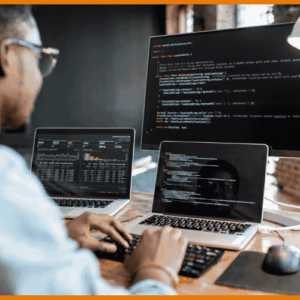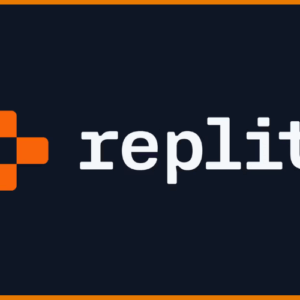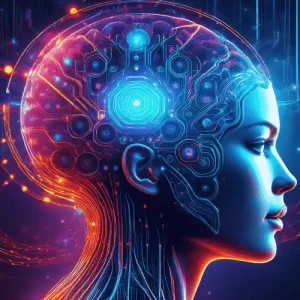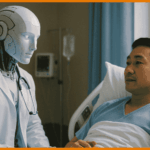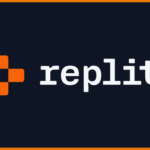The comparison between technology chips and human brain cells is fascinating because both represent highly complex, information-processing systems. While they are fundamentally different in their structure and function, understanding how they work and how they could complement each other opens up exciting possibilities for innovation, particularly in industrial applications and enhancing human experiences.
1. Fundamental Differences:
a. Technology Chips (Semiconductor Chips):
Structure & Function: Semiconductor chips, such as microprocessors, are typically built from materials like silicon. They process information in binary code (0s and 1s) using electronic signals. These chips are designed to perform specific tasks with high accuracy and speed, including arithmetic operations, logic processing, and memory storage.
Processing Power: Chips are designed for raw computational power and are typically optimized for speed, efficiency, and energy consumption. They excel in tasks that require repetitive, systematic, and fast calculations, such as running software, performing simulations, and enabling automation.
Limitations: Chips are limited by their architecture, which requires explicit programming. They lack the adaptability and flexibility of the human brain. Additionally, they can struggle with tasks that require intuition, emotional intelligence, or creative problem-solving.
b. Human Brain Cells (Neurons):
Structure & Function: The human brain consists of approximately 86 billion neurons communicating through electrical impulses and chemical signals. Neurons are connected in complex networks, enabling parallel processing. Each neuron can form thousands of synaptic connections with other neurons, creating intricate circuits that process information in a highly distributed and flexible manner.
Processing Power: The human brain processes information in a non-binary, analog-like manner, making it well-suited for tasks involving pattern recognition, learning from experience, and decision-making in uncertain or emotionally complex environments. The brain excels at tasks such as creativity, emotional intelligence, and intuition, which chips cannot easily replicate.
Limitations: The brain is slower than chips in terms of raw processing power and is energy-intensive, requiring significant resources to sustain its functions. While it can handle complex tasks, it is not as efficient as technology chips in tasks that require immense raw calculation or speed.
2. Potential Synergy:
When considering how these two systems could complement each other, there are several key areas where technology chips and human brain cells could work together to create a transformative impact:
a. Brain-Computer Interfaces (BCIs):
BCIs connect the human brain to external devices, enabling direct communication between the brain and machines. This field is still in its early stages but holds immense potential for enhancing human experience and capabilities.
Complementing Strengths: Chips could enhance the brain’s capabilities by acting as external processors that supplement the brain’s ability to solve complex problems or manage large-scale data. This could be particularly valuable in industries requiring real-time data analysis and decision-making, such as healthcare or manufacturing.
Potential Impact: In healthcare, for example, BCIs could enable people with disabilities to control prosthetics or communicate through thought alone. In industrial settings, they could enable workers to interact with machines using their minds, improving efficiency and reducing cognitive load.
b. Neuromorphic Computing:
Neuromorphic computing is a form of artificial intelligence that attempts to mimic the way the brain works, including its highly parallel processing and learning abilities. Neuromorphic chips are designed to simulate the behavior of brain cells and networks, offering greater flexibility and adaptability than traditional chips.
Complementing Strengths: By combining neuromorphic chips with human brain cells, we could develop systems that are not only computationally powerful but also capable of learning from experience like the human brain. This would enable machines to solve problems in dynamic and unpredictable environments, such as robotics or autonomous vehicles.
Potential Impact: This could revolutionize industries like healthcare (e.g., personalized medicine and diagnostics), manufacturing (e.g., smart factories and predictive maintenance), and even art (e.g., AI-driven creative tools).
c. Augmented Human Intelligence:
The combination of human intelligence and artificial intelligence (AI) is already taking place, but the integration of chips with brain-like capabilities could push this further. Imagine human workers or scientists wearing augmented reality (AR) glasses that are powered by technology chips and controlled by brain signals. This would enhance their cognitive abilities by providing real-time data processing and decision-making support.
Complementing Strengths: While human brain cells excel at creative, emotional, and intuitive decision-making, chips could augment this by providing computational support, data storage, and real-time analytics. Together, this would enable humans to make more informed decisions in complex, data-driven environments.
Potential Impact: In fields like education, healthcare, or even creativity, augmented human intelligence could help individuals learn faster, solve complex problems, or innovate in ways that were previously unimaginable. In manufacturing, augmented intelligence could optimize processes in real-time, improving production efficiency and reducing errors.
d. Artificial Neural Networks (ANNs):
Artificial neural networks (which are a form of machine learning inspired by human brain cells) are already revolutionizing AI by enabling machines to learn patterns and make decisions similar to how humans do. However, integrating real brain cells with these networks or using brain-like chips could create an even more powerful, adaptable AI system.
Complementing Strengths: By mimicking brain cells more closely, technology chips could gain the ability to process information in more human-like ways, making AI more flexible and capable of handling diverse, unforeseen challenges. Brain-like chips could also help bridge the gap between human thought processes and machine execution, creating smoother collaborations.
Potential Impact: This could lead to more efficient, adaptable AI systems across industries, particularly in customer service, healthcare diagnostics, and autonomous robotics. The seamless interaction between human brain cells and AI would lead to advancements in personalized healthcare, mental health support, and cognitive enhancement.
3. Industrial Applications and Human Experience:
a. Healthcare:
Technology chips can support advanced medical imaging, diagnostic tools, and patient monitoring systems. Brain cells (or neural networks) can enable more sophisticated AI models for predicting patient outcomes and offering personalized treatments.
Synergy: Neuromorphic chips can be used in medical devices that assist with brain function (e.g., neuroprosthetics or neurostimulation), enhancing the lives of individuals with neurological disorders.
b. Manufacturing and Automation:
Technology chips control robotics and automated systems, while human brain cells provide creative problem-solving abilities, intuition, and ethical judgment.
Synergy: Humans could oversee automated systems using brain-computer interfaces to control machines directly or to analyze real-time data in complex manufacturing environments, making rapid decisions with machine-backed precision.
c. Education & Personal Development:
Technology chips power tools like AI-driven tutoring systems while human brain cells process the learning material, using personal experiences to foster deeper understanding.
Synergy: Wearable devices and BCIs could enhance learning by providing immediate feedback and offering real-time analysis of emotional or cognitive states to help optimize learning strategies.
4. Challenges and Ethical Considerations:
As we explore the integration of technology chips and human brain cells, there are several challenges and ethical considerations:
Data Privacy & Security: How do we protect the data gathered from brain-computer interfaces? Who controls it, and how can we ensure it is not misused?
Neuroethics: What rights and protections should individuals have when their brains are interfaced with AI or machines?
Technological Dependence: Could reliance on these systems result in cognitive atrophy or mental health issues if not properly managed?
Conclusion
The fusion of technology chips and human brain cells presents immense potential for industries and human experience. By leveraging the strengths of both—chips for computational power and speed, and brain cells for creativity, learning, and adaptability—we could unlock breakthroughs in fields like healthcare, education, manufacturing, and AI development. However, this synergy also requires careful consideration of ethical and practical challenges to ensure it benefits humanity as a whole.
